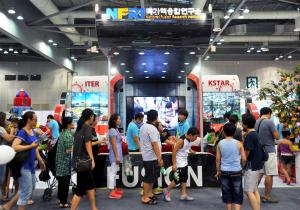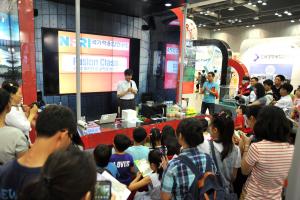250,000 visitors at Korean Science Festival
10 Sep 2012
-
Ji-min Song, ITER Korea
The National Fusion Research Institute showed the development of fusion energy by introducing KSTAR, the world's largest existing superconducting tokamak device, and ITER.
Korea's largest annual science exhibition, the Korean Science Festival 2012 was held in the convention centre KINTEX in Il-San, north-west of Seoul, on 14-19 August 2012. Over 250,000 students and parents got the chance to experience scientific programs ranging from climate change to energy.
The National Fusion Research Institute (NFRI) showed the development of fusion energy by introducing KSTAR, the world's largest existing superconducting tokamak, and ITER, which aims to demonstrate that fusion is one of the answers to our future energy needs.
Fusion can be fun ... as was demonstrated during the fusion classes that were held for the young public at the Festival.
Through the use of plasma balls, staff from NFRI were able to explain in a simple way the nature and behaviour of plasma, the fourth state of matter. They also gave talks on the work being performed at NFRI, KSTAR and ITER.
The 2012 Korean Science Festival, centred on the theme of 'Science and Creativity,' was celebrated by all and the festival was clearly a success.
Leaving the convention centre with memories of a great experience, all the participants were looking forward to the one that will take place next year.



